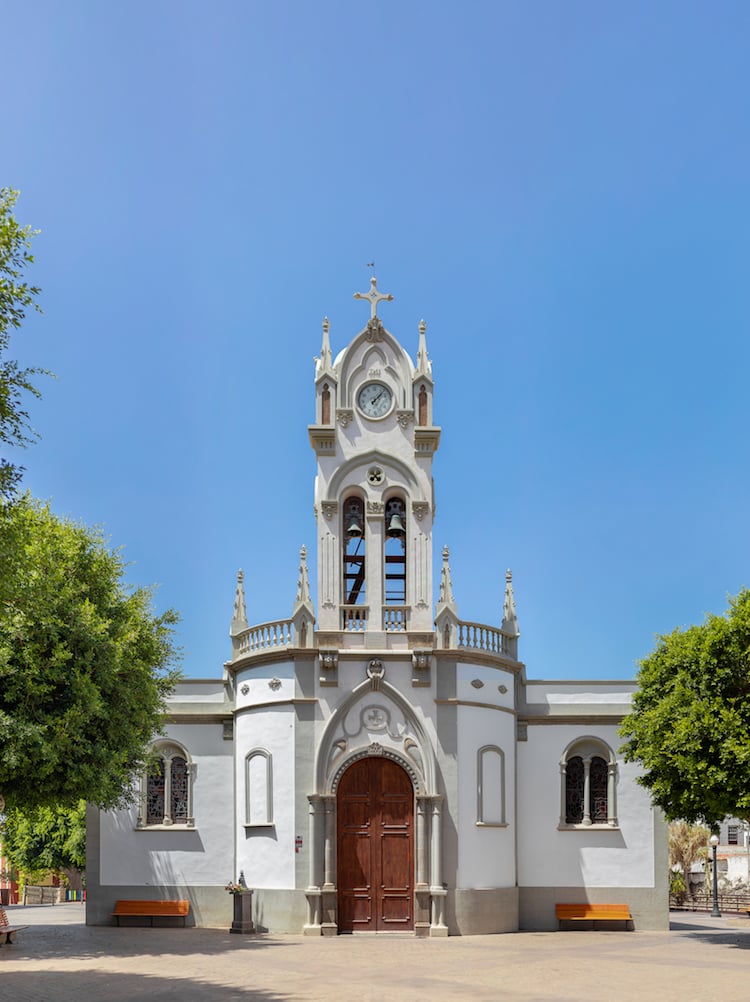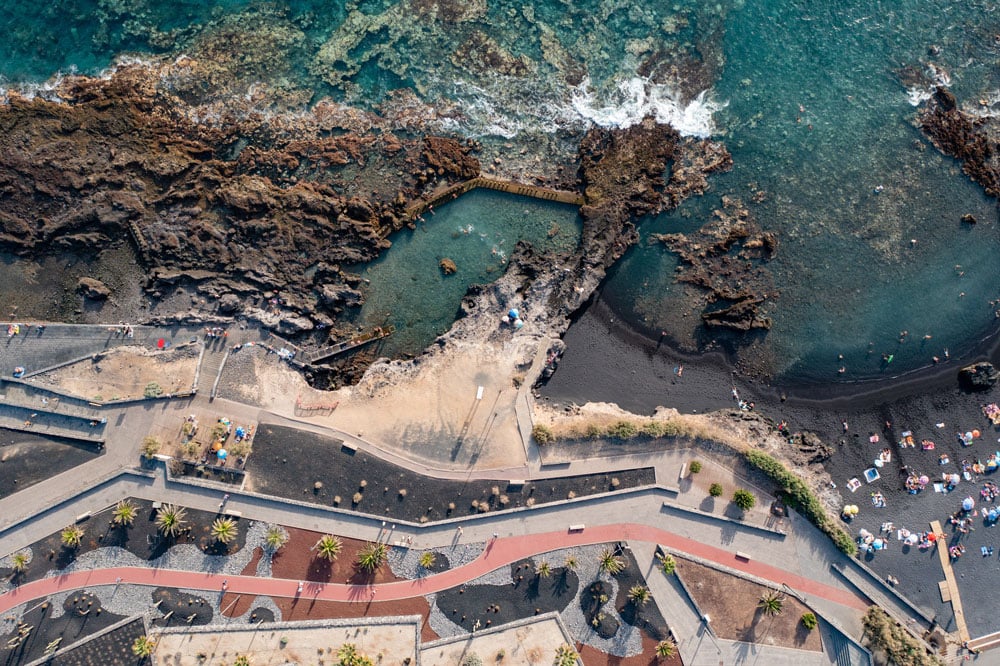
Abama being considered a sustainable tourism destination comes down to our location in one of the most special places on Earth. The entire island of Tenerife is worth exploring, but today we suggest you begin with our own municipality, Guía de Isora, which has plenty of treasures to discover.
One of the most important things to know about Guía de Isora is that it has made a conscious choice to protect and maintain the natural character of the environment, and to actively promote sustainable tourism and conservation of its natural, social, cultural, architectural, and ethnographic resources. It has obtained a Biosphere Destination Certificate from the Responsible Tourism Institute, the only institution that takes into account government, business, and social sustainability actions as a whole in deciding who should receive certification. At the moment, the only places in the Canary Islands to hold this sustainable tourism destination certification are the Cabildo of Tenerife, Arona, and Guía de Isora. Guía de Isora also just received an Escoba de Oro award from ATEGRUS for its innovative work in completely reorganizing waste pickup in the municipality.
Ready to explore? The old part of the city contains many well preserved buildings that date to the 19th and 20th Centuries, with a few from the 18th, as well. Walking the narrow streets will transport you back in time as you pass elements of its architectural and cultural heritage. And in the hills surrounding the city, Guía de Isora has a well marked network of walking trails that connect many of the sites below. Try them all and then visit again!
The Nuestra Señora de la Luz Church
Located in the middle of the old part of the city, this church has undergone many transformations over the years. The first building was constructed in the 16th century, with two naves and two doors, but in 1901 the town decided to refurbish the church, resulting in the building with three naves that we have today. The clocktower was built in the 1920s, with the clock finally hung in the 1940s. Inside, there are numerous works of religious art, including sculpture, paintings, and reliefs.

Aripe and Chirche
These two towns located in the hills of Guía de Isora were declared an Asset of Cultural Interest in 2008 because of the state of conservation of their many houses that date back to the 18th and 19th Centuries. With their newly restored streets, which use a material similar to the original, you can now walk through the town and see the ovens, threshing floors and cisterns typical of former villages.
There is also the Chirche Mirador, a lookout that will give you an amazing view over both villages and the whole of Guía de Isora, all the way down to the sea (pictured at the top of this article).
The Manuel Martín González Exhibition
Manuel Martín González, born in 1905 in Guía de Isora, is considered one of the best landscape artists of the Canary Islands, and he achieved both national and international prestige during his lifetime, his work appearing in numerous exhibits in the Canaries, on the peninsula, and in other European countries.
The Guía de Isora Culture Department in the center of town has a permanent exhibition of his work. Half of the space contains samples of the commercial work that the artist did during his time in Cuba between 1923 and 1932, and the other has examples of his landscape paintings, which demonstrate his fine eye for the textures of land and sea, as well as a gift for capturing the quality of the island light.
C/ La Vera, 5 in Guía de Isora
8-15h (winter) and 8-14h (summer)
The Chío Recreational Area
There’s a recreational area in Chío where you can do all kinds of outdoor activities while still enjoying numerous services like drinking water, restrooms, grills, picnic tables, a sports area, and a children’s playground. It is an official camping ground where you can book a spot to bring a tent and set yourself up among the beautiful pines, then enjoy days of hiking around this sustainable tourism destination.
Carretera TF-38, Chío-Boca Tauce (Km. 12.5)
Playa San Juan Beach
Playa San Juan is one of the best beaches in the area, a perfect place to relax and enjoy calm waters or visit one of the many restaurants and cafes that can be found along the coast. This sandy beach is the seafront of the small fishing village that neighbors Abama, and a truly delightful place to walk the streets, discover tiny shops or places to eat, or visit the outdoor market that is there on Wednesdays from 8-13:30h in the plaza.
The beachfront promenade of Playa San Juan is nearly two kilometers long, providing plenty of room for enjoying the sights of the sea and the town. There is an old stove that dates to the 18th Century located just near the sea.
Abama Beach
Our own Abama Beach is a tranquil rocky cove where golden sands and wave breakers create a shallow swimming area perfect for a cooling dip. You can take a walk along the water and out onto the old pier for a better view of the ocean and La Gomera. The Abama Beach Club serves drinks and light food through its beach service from 11 to 18h every day, as well as lunch in the restaurant from 13 to 17h.
The La Jaquita-Alcalá Beach
This coastal area is one of the most interesting in Guía de Isora, including three beach areas set in black lava cliffs that separate it into tiny coves of volcanic sand. There are water activities that leave from its tiny pier, or you can try the natural pools that dot the whole extension of the beachfront. Easy access to the pools was introduced through a beach renovation and sustainability project carried out by Coderch Urbanismo y Arquitectura, who have also designed numerous projects at Abama. The beaches now also have changing rooms, accessible restrooms, lifeguard service, and first-aid services. The area has the “Bandera Azul”, certifying it a safe place to swim.
The boardwalk and beachfront area of Alcalá was also refurbished in the same project, giving visitors a long coastal walk from which they can see the sunset or enjoy the greenery of the landscaped gardens that run parallel to the water. There are also sport facilities for basketball and volleyball, and a bike path that runs along part of the promenade. Like Playa San Juan, Alcalá has a weekly outdoor market, which you can visit on Mondays from 8-13:30h.

There are any number of interesting annual events in Guía de Isora as well, from the Miradas Doc documentary festival in February (one of the biggest in the world), to all the tastings, concerts and workshops during March’s Wine month, to Pascua Florida, a festival in the spring with displays of astounding floral art and activities all over the area. Visit their page of annual activities to discover what’s going on while you’re at Abama.
For those of you looking for outdoor activities such as sailing, climbing, canoeing, camping, etc. the Tourism Department of Guía de Isora has compiled a good list on their website as well. And to get more information about the hiking trails and other natural activities we mentioned previously, such as the hiking routes that go between the protected parks in the municipality, have a look at their nature page.
If you choose to take up the challenge, you’ll find plenty to do all year long in Guía de Isora, without even considering the other activity-rich parts of Tenerife. Living at Abama in our sustainable homes means far more than enjoying the facilities here on the grounds. Join the vibrant community around us and dive into this sustainable tourism destination head first to learn more!







